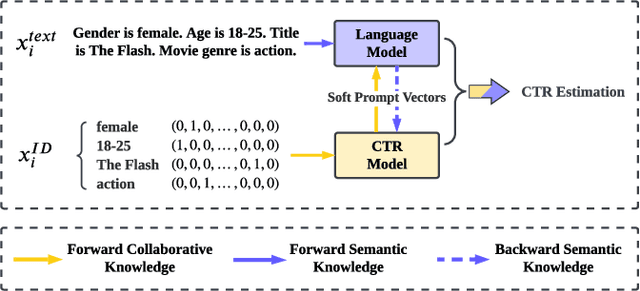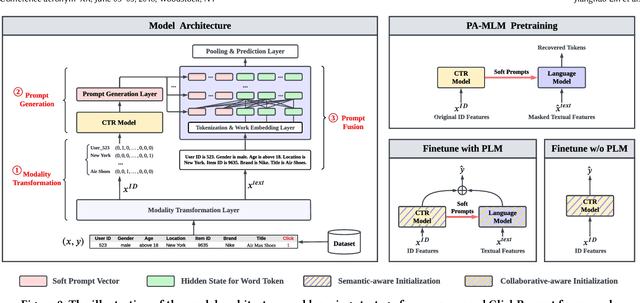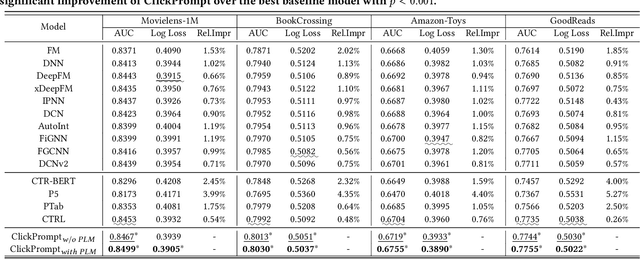ClickPrompt: CTR Models are Strong Prompt Generators for Adapting Language Models to CTR Prediction
Paper and Code
Oct 17, 2023



Click-through rate (CTR) prediction has become increasingly indispensable for various Internet applications. Traditional CTR models convert the multi-field categorical data into ID features via one-hot encoding, and extract the collaborative signals among features. Such a paradigm suffers from the problem of semantic information loss. Another line of research explores the potential of pretrained language models (PLMs) for CTR prediction by converting input data into textual sentences through hard prompt templates. Although semantic signals are preserved, they generally fail to capture the collaborative information (e.g., feature interactions, pure ID features), not to mention the unacceptable inference overhead brought by the huge model size. In this paper, we aim to model both the semantic knowledge and collaborative knowledge for accurate CTR estimation, and meanwhile address the inference inefficiency issue. To benefit from both worlds and close their gaps, we propose a novel model-agnostic framework (i.e., ClickPrompt), where we incorporate CTR models to generate interaction-aware soft prompts for PLMs. We design a prompt-augmented masked language modeling (PA-MLM) pretraining task, where PLM has to recover the masked tokens based on the language context, as well as the soft prompts generated by CTR model. The collaborative and semantic knowledge from ID and textual features would be explicitly aligned and interacted via the prompt interface. Then, we can either tune the CTR model with PLM for superior performance, or solely tune the CTR model without PLM for inference efficiency. Experiments on four real-world datasets validate the effectiveness of ClickPrompt compared with existing baselines.
 Add to Chrome
Add to Chrome Add to Firefox
Add to Firefox Add to Edge
Add to Edge